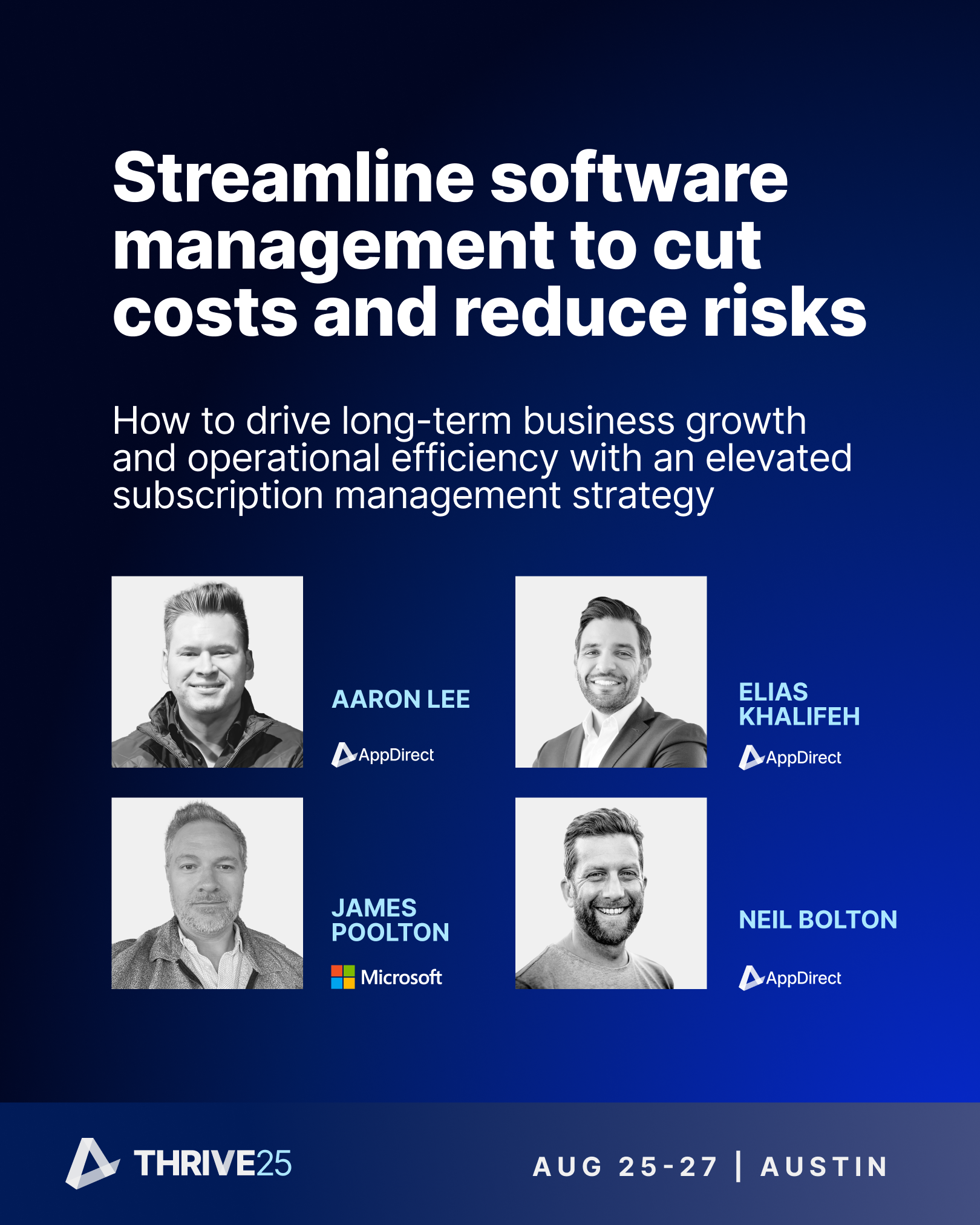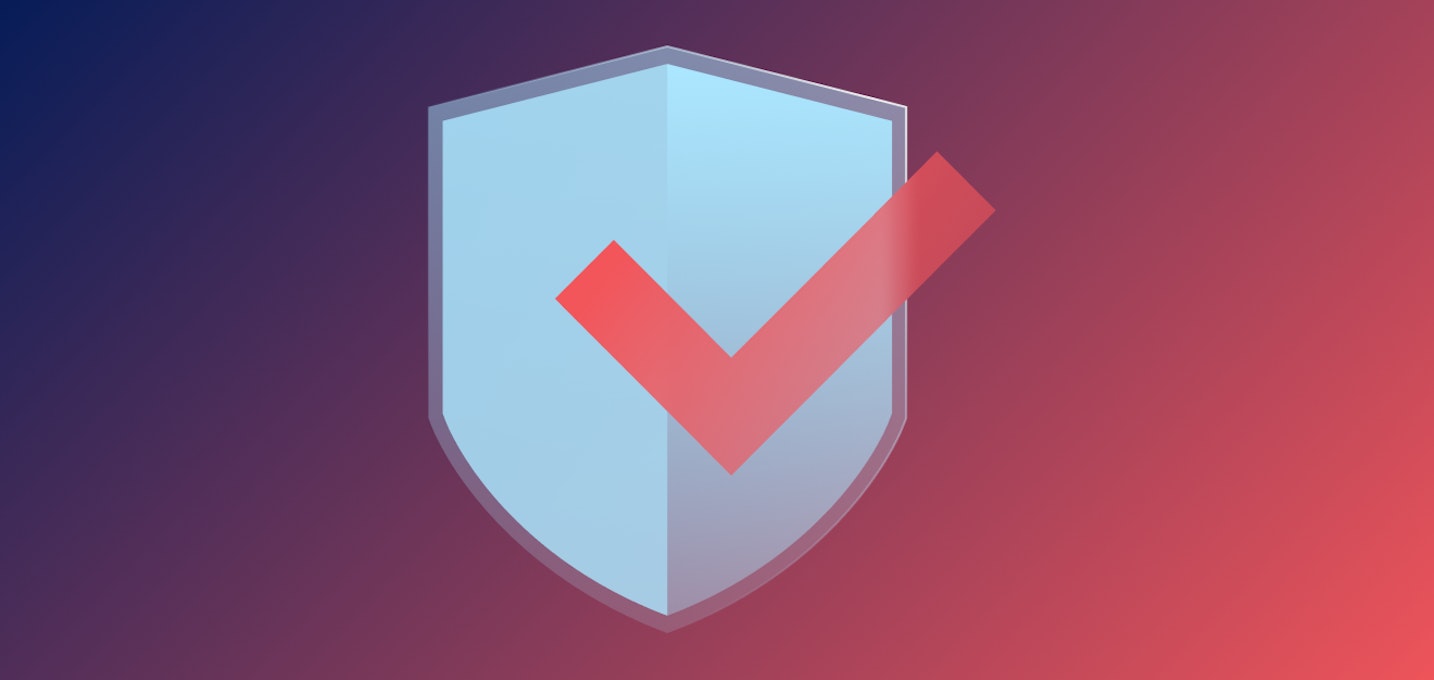Strategy & Best Practices
Streamline software management to cut costs and reduce risks
By Denise Sarazin / July 22, 2025

In this article:
https://media.trustradius.com/...Is your software management approach keeping pace with your business ambitions? Are your SaaS apps making your teams more effective, or crushing your agility and productivity? As it turns out, the proliferation of SaaS apps your IT team and employees are using—commonly referred to as SaaS sprawl—could be hampering your business in unexpected ways, hindering efficiency and increasing your costs, rather than being the panacea you thought it would be.
In this article, we explore how you can ensure you have the apps you need to meet your business requirements, while ensuring better control, efficiency, security, and visibility into every app in use in your company.
About this article
This article is part of our Thrive Blog Series, offering a glimpse into the kinds of trends and insights we’ll be exploring at Thrive 2025 in Austin, August 25-27. Watch for new posts on our blog through August.
The hidden costs of SaaS sprawl: Shadow IT, security risks, and wasted spend
Businesses today rely on a vast and intricate array of software applications—the engines that power daily operations, fuel innovation, and connect them seamlessly with customers. But this reliance often comes at a cost. The average midsize enterprise uses more than 240 applications, adding six new applications every month. While individual applications promise increased productivity, the reality is often the opposite: employees bogged down by app overload, struggling to manage a multitude of tools and navigate between disjointed workflows.
Organizations are grappling with a mix of legacy on-premises systems and a burgeoning cloud footprint, leading to fragmented processes, escalating costs, and heightened security risks. This sprawling SaaS landscape makes it difficult to maintain a truly comprehensive view of what's being used, by whom, and to what end.
Shadow IT: A risky business
Many companies might be surprised to learn that up to 60% of SaaS applications go unnoticed by central IT departments, accounting for a third of the IT stack, as departments like marketing, sales, and HR independently purchase tools on their own to meet specific needs. The poor SaaS tracking that results is a major issue, with the average company using only 49% of their SaaS licenses, the other 51% becoming shelfware (tools that are being paid for but not used). This leads to an annual loss of $8.3M, and that doesn’t include additional costs caused by the potential security vulnerabilities and decreased productivity this lack of oversight incurs.
The issue at the heart of SaaS sprawl isn't simply the sheer number of applications; it’s the lack of centralized control, visibility, and a cohesive strategy for managing them. Without this, organizations face:
- Amplified security risks—They’re five times more susceptible to a security incident
- Wasted money from operational inefficiencies—The lack of central visibility and tracking leads to an average of $21 million in wasted spending on unused licenses each year for an average MSE, with 47% of licenses going unused. Another source of wasted money is late fees, as 41% of buyers face late fees due to fragmented billing across multiple vendors.
What’s the ultimate cost? Wasting resources leads to reduced agility, stifled innovation, and a hindered ability to adapt to evolving market demands.
The critical need for identity and access management
The lack of centralized identity and access management tools creates a significant challenge for IT teams, forcing them to manually manage access across numerous applications. According to Gartner, only 35% of SaaS applications are fully integrated with Single Sign-On (SSO). This shortfall has significant consequences, as 90% of security incidents involving SaaS applications originate from issues such as unenforced SSO or absent multi-factor authentication.
This situation leads to delays for new hires waiting for access to essential tools and increases the risk of former employees retaining access to sensitive systems, creating potential security and compliance liabilities. By centralizing software access through a single platform, organizations can streamline onboarding processes, automate offboarding procedures, and ensure that access remains consistent with roles, employment status, and established policies.
From chaos to clarity: how a unified lifecycle management approach to SaaS fuels business agility
This is where a strategic approach to software consolidation comes into play—not merely as a cost-cutting measure but as a fundamental pillar of a comprehensive cloud lifecycle management strategy. By weaving consolidation into every stage of the IT lifecycle—from planning and procurement to security, optimization, and governance—businesses can unlock a future-ready technology ecosystem that drives efficiency, agility, and innovation.
For many businesses, software procurement has often been a reactive process. This fragmented approach not only impacts employee efficiency but can significantly hinder a business's ability to adapt, innovate, and thrive. Consider this: a 2023 industry report by BetterCloud found that a staggering 86% of organizations identify SaaS sprawl as a valid concern, but but nearly two-thirds (64%) lack insight and visibility to automate effectively, and 42% reporting difficulty securing apps as a result. Clearly, businesses can no longer afford to take a haphazard approach to software management.
The strategic cloud lifecycle approach
Shifting from this reactive model to a strategic, consolidated approach is essential for navigating the complexities of today's digital landscape and for achieving sustainable business success. Let's explore how software consolidation—streamlining management, minimizing risk, and maximizing value—serves as a cornerstone in each stage of the cloud lifecycle:
Strategic planning and procurement
Imagine a world where IT leaders have uncluttered visibility into their entire software ecosystem, enabling them to make data-driven decisions that optimize spending and align with long-term business objectives.
Consolidation paves the way for this strategic clarity. By minimizing redundant applications and leveraging the cost advantages of enterprise agreements—with leading providers like Microsoft increasingly offering comprehensive solutions designed to streamline SaaS management—organizations can unlock significant savings and reinvest those resources in innovation and growth initiatives.
Streamlined deployment and integration
Deploying new software shouldn’t feel like navigating a labyrinth. A consolidated software strategy streamlines this process, enabling faster, more efficient integration of new cloud solutions.
By minimizing the number of platforms and prioritizing those that offer pre-built integrations, businesses can reduce integration complexity, accelerate time-to-value, and empower employees with the tools they need, faster. For example, opting for solutions within the Microsoft ecosystem, known for its robust integration capabilities, can significantly streamline deployment and management.
Optimized management and security
In the realm of software management, simplicity is synonymous with security. A consolidated environment, ideally managed through a centralized platform, empowers IT teams with real-time visibility into application usage, simplifies license management, and streamlines user provisioning and deprovisioning.
This central control minimizes the risk of shadow IT, reduces the attack surface, and enables organizations to enforce consistent security policies and access controls across their entire IT ecosystem.
Enhanced scalability and adaptability
Business needs rarely remain static. A well-consolidated software environment, built upon a foundation of flexible, scalable solutions, empowers organizations to respond rapidly to changing demands.
Whether it’s scaling up to support rapid growth, integrating new tools to capitalize on market opportunities, or adapting to evolving security threats, a consolidated approach ensures agility and resilience in the face of change.
The evolving role of the B2B buyer
When considering your SaaS strategy, it’s important to understand the changing B2B buying habits. Buyers are becoming more digitally savvy, often turning to online marketplaces to procure software solutions. In fact, 59 percent of B2B buyers are conducting over a quarter of their purchases on online marketplaces.
However, this doesn't negate the need for human interaction and expert guidance. While buyers are comfortable researching and comparing solutions online, they still value the support and expertise that a trusted technology advisor or partner can provide. This is particularly true when it comes to complex areas like SaaS management, where expert guidance can help businesses navigate the intricacies of consolidation, optimize their software portfolio, and maximize their technology investments.
The power of a centralized SaaS management platform
A centralized SaaS management platform is the key to achieving true software consolidation and unlocking the full value of your SaaS investments. Let's break down the benefits such a platform provides:
Spend management—Gain a consolidated view of application spend, optimize cloud spending by consolidating invoice and subscription management, ensure timely payments with unified invoice management, and take control of subscriptions
Workforce identity management—Automate onboarding and offboarding flows, simplify user provisioning, reduce IT costs, and enhance security with single sign-on and multi-factor authentication.
Data management and extensibility—Gain insight into application usage and spend, to drive smarter business decisions, integrate existing tech stacks and SaaS subscriptions, and extend management tools and systems.
Investing in a robust SaaS management platform offers numerous advantages, including:
A 360-degree view of your SaaS lifecycle—Enabling data-driven decisions and optimization of your SaaS portfolio
Control over your SaaS ecosystem—Eliminating the constant struggle to keep up with SaaS sprawl
Time savings and efficiency—Streamlined onboarding, automated processes, and centralized management for increased productivity
A SaaS portfolio aligned with your business needs—Supporting growth and agility while maximizing your technology investments
Beyond the sale—The importance of value-added services
Finally, it's crucial to consider the post-sale support and value-added services offered by potential technology partners. Businesses are increasingly seeking partners that go beyond the transaction, providing ongoing support, expertise, and guidance throughout their SaaS journey. Look for partners who can assist with:
Onboarding and implementation support—Ensuring a smooth transition to a centralized SaaS management platform
Integration services—Seamlessly connecting your existing systems and applications.
Security solutions—Strengthening your security posture and protecting sensitive data.
Consulting services—Providing expert guidance on SaaS optimization, cost management, and governance.
By selecting a partner that offers a comprehensive suite of value-added services, you can maximize the value of your SaaS investments and ensure that your technology ecosystem continues to support your business goals, both now and in the future.
Next steps
Ready to take control of your SaaS landscape and unlock the true potential of your software? Discover how AppDirect’s cloud solutions and Marketplace make it easy to manage all your subscriptions in one place. Contact us today to learn more.
Join us at Thrive
Join us in Austin August 25-27 at our Thrive25 conference for an in-depth look at how streamlining subscription management onto a single platform with top providers like Microsoft makes it easier to purchase, provision, and manage essential cloud subscriptions organizations rely on.
Register today and check out the many other available sessions and panels.

Related Articles

Strategy & Best Practices
Why Savvy Businesses are Centralizing Their SaaS Management
Discover how centralized SaaS management tackles the biggest challenges businesses face today—unused licenses, shadow IT, security risks, and wasted budget spend. Learn how advisors can help customers regain control, reduce costs, and simplify operations while driving growth through optimized SaaS portfolios.By Denise Sarazin / AppDirect / June 2, 2025

Strategy & Best Practices
2025 Insights: How to Sell B2B SaaS—10 Strategies for Success
B2B SaaS marketplaces are booming—Find out how to maximize your sales with proven strategies for leveraging partners, optimizing customer experience, and driving revenue.By Rebecca Muhlenkort / AppDirect / May 27, 2025

Strategy & Best Practices
Choosing the Right Security Solutions: Building a Proactive Defense Strategy
Navigate the vast security solution landscape with strategic guidance from technology advisors. Discover effective security conversations that align with business objectives, enhance protection, and embrace digital marketplace integration for streamlined cybersecurity solutions.By Rebecca Muhlenkort / AppDirect / July 7, 2025